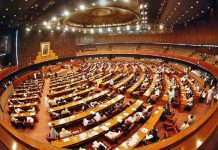ISLAMABAD – The Finance Division has allocated Rs757.336 million as provisional Indicative Budget Ceilings (IBCs) for the Power Division for the fiscal year 2025–26, according to official documents reviewed by this correspondent.
Out of the total amount, Rs399.004 million has been earmarked for Employees’ Related Expenses (ERE), while Rs358.322 million is set aside for non-ERE operating costs. These ceilings apply to the main division, its attached departments, and subordinate offices. Grant-in-aid to autonomous bodies and entities is to be kept to a bare minimum and considered only as non-recurring expenditures to cover temporary shortfalls.
In line with prudent budget-making principles, the Finance Division has rejected any out-of-process requests for increases in allowances or benefits, affirming that such changes will only be considered through the formal federal budget process.
The non-ERE allocation accounts for inflation, exchange rate movements, and other specific operating cost pressures. The Finance Division has issued a comprehensive list of instructions to be followed by Principal Accounting Officers (PAOs), departmental heads, and public bodies while preparing budget estimates for each cost centre under Budget Orders (BOs) and New Item Statements (NISs).
Key requirements include adherence to the Public Finance Management (PFM) Act, 2019, Treasury Single Account (TSA) implementation under the Cash Management and TSA Rules 2024, and compliance with financial guidelines outlined in the Financial Management and Powers of PAOs Regulations, 2021.
The ERE budgets must account only for filled posts, with all posts vacant for more than three years to be abolished. No new posts will be created, in line with the ongoing freeze on public sector expansion. Gender-responsive and climate-sensitive budgeting forms are mandatory for all departments, with specific gender and climate KPIs to be defined in the performance-based budgeting formats.
Further, budget estimates must be submitted quarterly (Form-XV), and PAOs have been directed to plan expenditures strictly within allocated ceilings. Supplementary budgets will be discouraged, with approvals only granted under exceptional circumstances and with clearance from the Economic Coordination Committee (ECC) and the Cabinet.
Autonomous bodies must prepare budgets under distinct object heads, curtail expenditures, and generate revenues in accordance with their statutory mandates. Austerity measures remain in force, and any expenditure on banned heads will only be released upon approval by the relevant austerity committee.
Divisions have also been instructed to ensure full rupee cover for all anticipated foreign loans and grants and to prioritize essential payments such as legal liabilities, training, asset maintenance, and support for deceased employees’ families.
All divisions have been directed to submit their BOs, NISs, post-performa data, and performance budgeting forms to the Budget Wing for integration into the SAP system starting May 10, 2025.
























